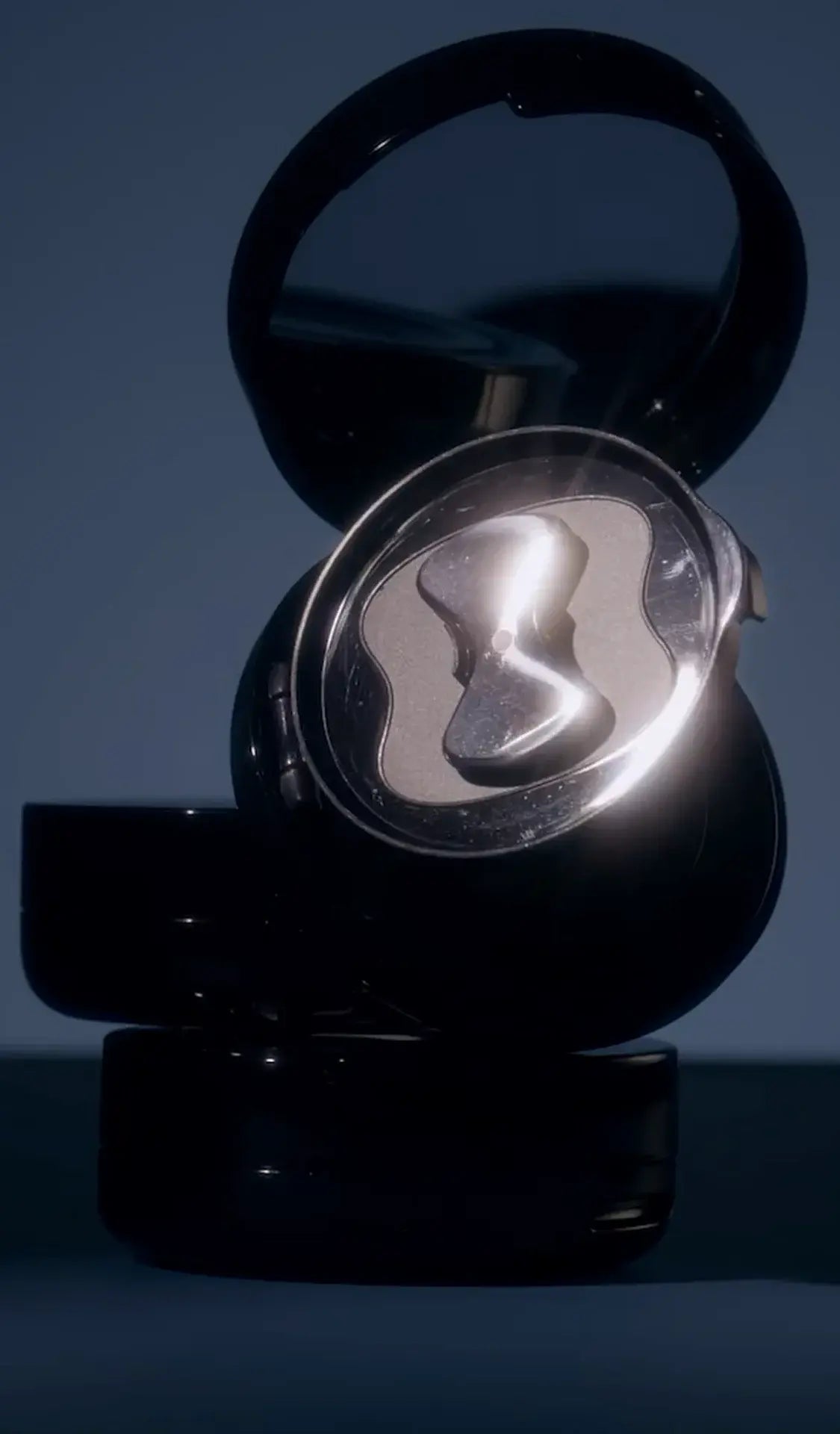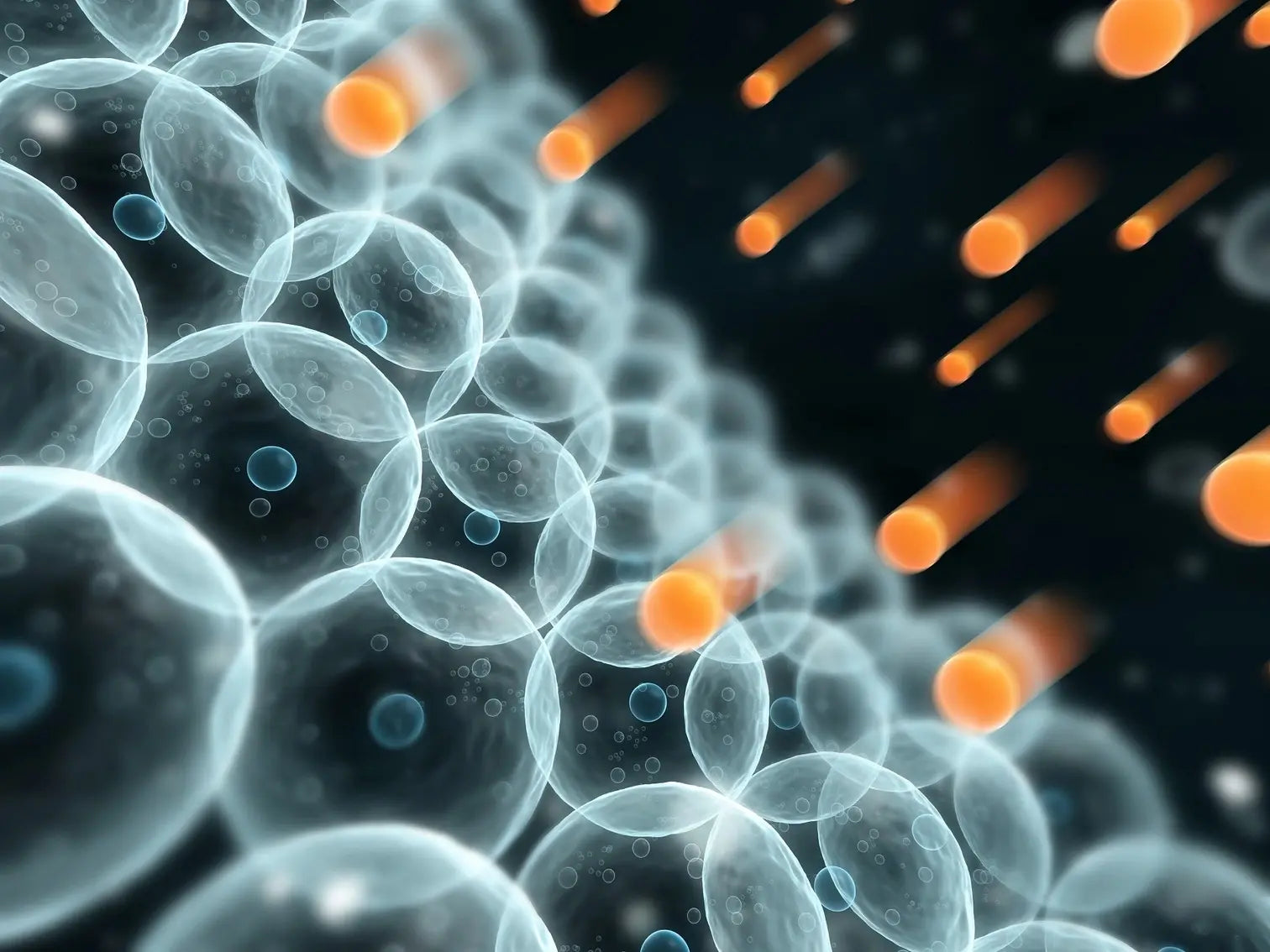What are free radicals in skin and what causes them?
What are free radicals in skin and what causes them?
How do free radicals affect the skin?
How do free radicals affect the skin?
How do you know if you have free radicals?
- Uneven skin tone on body
- Reduced elasticity
- Discoloration
- Fine lines/wrinkles
- Dull skin
- Redness/broken blood vessels
How do you know if you have free radicals?
- Uneven skin tone on body
- Reduced elasticity
- Discoloration
- Fine lines/wrinkles
- Dull skin
- Redness/broken blood vessels
Do antioxidants fight free radicals in the skin?
- Vitamin A - (a.k.a retinoid acid) is a powerful antioxidant that quenches ROS but also functions to target fine lines and wrinkles, due to increasing skin cell turnover and collagen synthesis. However, certain common side effects like dryness and heightened sensitivity may make retinol unsuitable for long-term use. Additionally, retinol’s impact on the skin barrier can potentially compromise long-term skin health.
- Vitamin C - (a.k.a. ascorbic acid) is the most abundant antioxidant in skin, as a derivative of glucose metabolism.4 More stable structures of vitamin C have been synthesized and used in skincare to increase product shelf life and maximize topical antioxidant effects, outside of helping with pigmentation issues.
- Vitamin E - (a.k.a alphatocopherol) is one more potent antioxidant that primarily interacts with Vitamin C to prevent each other’s oxidation. Also a good moisturizing agent, Vitamin E protects from free radicals in oxidized lipids (oils) that are implicated in many inflammatory skin conditions.[5]
Do antioxidants fight free radicals in the skin?
- Vitamin A - (a.k.a retinoid acid) is a powerful antioxidant that quenches ROS but also functions to target fine lines and wrinkles, due to increasing skin cell turnover and collagen synthesis. However, certain common side effects like dryness and heightened sensitivity may make retinol unsuitable for long-term use. Additionally, retinol’s impact on the skin barrier can potentially compromise long-term skin health.
- Vitamin C - (a.k.a. ascorbic acid) is the most abundant antioxidant in skin, as a derivative of glucose metabolism.4 More stable structures of vitamin C have been synthesized and used in skincare to increase product shelf life and maximize topical antioxidant effects, outside of helping with pigmentation issues.
- Vitamin E - (a.k.a alphatocopherol) is one more potent antioxidant that primarily interacts with Vitamin C to prevent each other’s oxidation. Also a good moisturizing agent, Vitamin E protects from free radicals in oxidized lipids (oils) that are implicated in many inflammatory skin conditions.[5]
Can free radical damage be reversed in the skin?
Can free radical damage be reversed in the skin?
How does age impact free radical damage?
How does age impact free radical damage?
How can I protect my skin from free radicals?
How can I protect my skin from free radicals?
- Free radicals are unstable molecules that steal electrons from important biological molecules like DNA and protein, permanently altering their structure and function.
- Lifestyle choices can increase free radicals in the body, overwhelming natural antioxidant defenses to cause DNA damage or even generate mutations that lead to skin damage and skin cancer.
- Oxidative stress from UV exposure in skin cells is one of the main causes of skin aging.
- Skin changes such as a weakened skin barrier, and visible signs, including wrinkles, dullness, discoloration, and redness/inflammation are symptoms of free radical damage.
- Free radicals are stabilized by powerful antioxidants in the body or in topical skin care products.
- Antioxidants should be used prior to any activity that could lead to free radical production, such as sun exposure.
- OneSkin’s topical supplements contain several antioxidants for skin, along with the OS-01 peptide which has been scientifically proven to reduce the effects of UV aging to mitigate/delay visible signs of aging.
- Free radicals are unstable molecules that steal electrons from important biological molecules like DNA and protein, permanently altering their structure and function.
- Lifestyle choices can increase free radicals in the body, overwhelming natural antioxidant defenses to cause DNA damage or even generate mutations that lead to skin damage and skin cancer.
- Oxidative stress from UV exposure in skin cells is one of the main causes of skin aging.
- Skin changes such as a weakened skin barrier, and visible signs, including wrinkles, dullness, discoloration, and redness/inflammation are symptoms of free radical damage.
- Free radicals are stabilized by powerful antioxidants in the body or in topical skin care products.
- Antioxidants should be used prior to any activity that could lead to free radical production, such as sun exposure.
- OneSkin’s topical supplements contain several antioxidants for skin, along with the OS-01 peptide which has been scientifically proven to reduce the effects of UV aging to mitigate/delay visible signs of aging.
- https://www.ncbi.nlm.nih.gov/pmc/articles/PMC3299230/
- https://pubmed.ncbi.nlm.nih.gov/23746838/
- https://www.ncbi.nlm.nih.gov/pmc/articles/PMC5514576/
- https://www.ncbi.nlm.nih.gov/pmc/articles/PMC4496685/
- https://www.ncbi.nlm.nih.gov/pmc/articles/PMC8509443/
- https://www.nature.com/articles/s41514-023-00109-1
- https://www.ncbi.nlm.nih.gov/pmc/articles/PMC3299230/
- https://pubmed.ncbi.nlm.nih.gov/23746838/
- https://www.ncbi.nlm.nih.gov/pmc/articles/PMC5514576/
- https://www.ncbi.nlm.nih.gov/pmc/articles/PMC4496685/
- https://www.ncbi.nlm.nih.gov/pmc/articles/PMC8509443/
- https://www.nature.com/articles/s41514-023-00109-1



